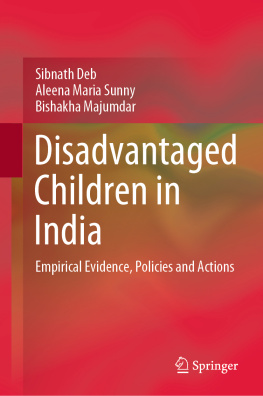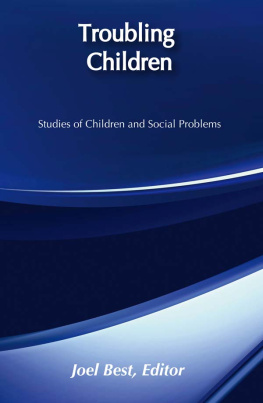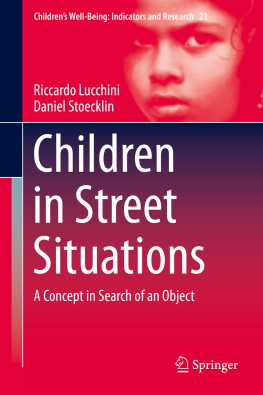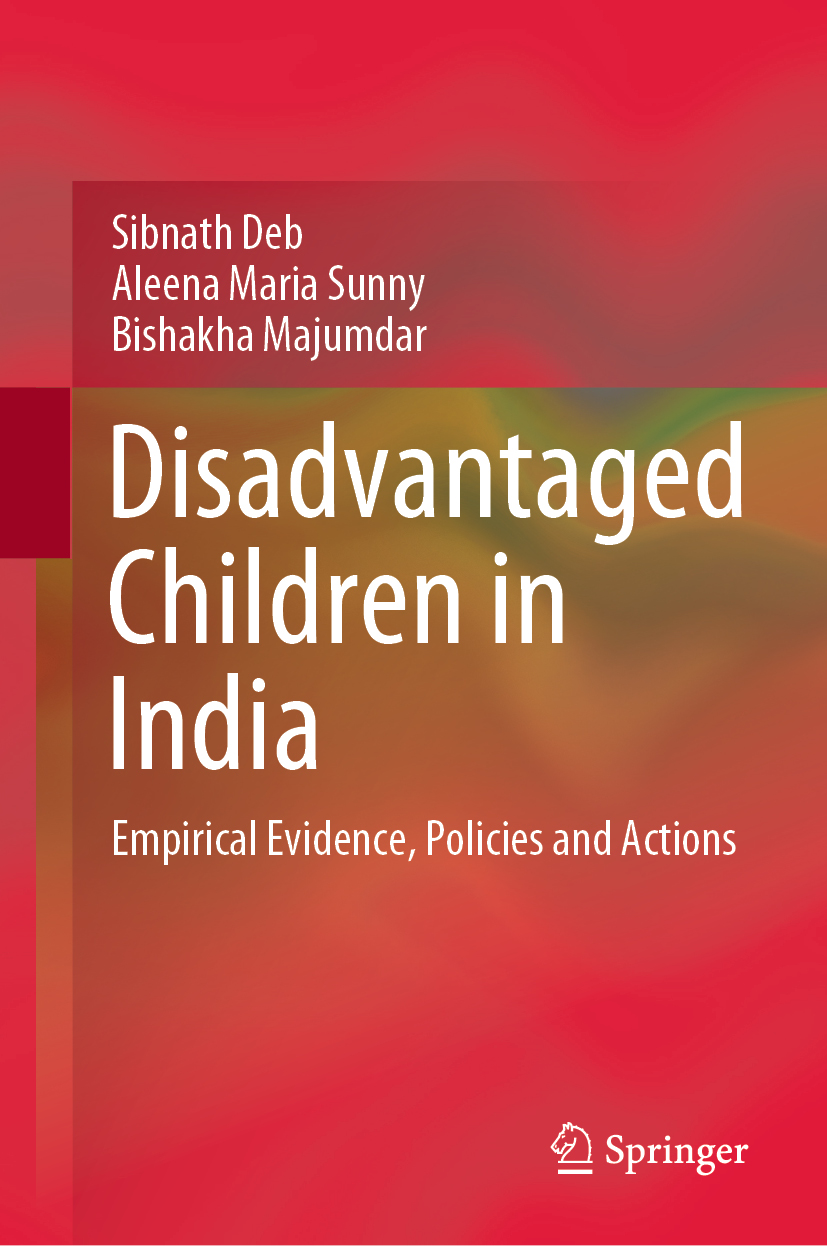Sibnath Deb , Aleena Maria Sunny and Bishakha Majumdar
Disadvantaged Children in India
Empirical Evidence, Policies and Actions
Sibnath Deb
Department of Applied Psychology, Pondicherry University, Puducherry, Pondicherry, India
Aleena Maria Sunny
Department of Applied Psychology, Pondicherry University, Puducherry, Pondicherry, India
Bishakha Majumdar
Organizational Behavior and Human Resource Management, Indian Institution of Management Visakhapatnam, Visakhapatnam, Andhra Pradesh, India
ISBN 978-981-15-1317-6 e-ISBN 978-981-15-1318-3
https://doi.org/10.1007/978-981-15-1318-3
Springer Nature Singapore Pte Ltd. 2020
This work is subject to copyright. All rights are reserved by the Publisher, whether the whole or part of the material is concerned, specifically the rights of translation, reprinting, reuse of illustrations, recitation, broadcasting, reproduction on microfilms or in any other physical way, and transmission or information storage and retrieval, electronic adaptation, computer software, or by similar or dissimilar methodology now known or hereafter developed.
The use of general descriptive names, registered names, trademarks, service marks, etc. in this publication does not imply, even in the absence of a specific statement, that such names are exempt from the relevant protective laws and regulations and therefore free for general use.
The publisher, the authors and the editors are safe to assume that the advice and information in this book are believed to be true and accurate at the date of publication. Neither the publisher nor the authors or the editors give a warranty, expressed or implied, with respect to the material contained herein or for any errors or omissions that may have been made. The publisher remains neutral with regard to jurisdictional claims in published maps and institutional affiliations.
This Springer imprint is published by the registered company Springer Nature Singapore Pte Ltd.
The registered company address is: 152 Beach Road, #21-01/04 Gateway East, Singapore 189721, Singapore
Foreword
Around 39% of Indias population of 1.36 billion are children. Of these, millions of disadvantaged children live on the streets, in slums or institutions. They are especially vulnerable to being exploited for child labour, trafficked for prostitution, organ harvesting, illegal adoption, child marriage and begging. They are also susceptible to being recruited into gangs where they commence a life dependent on petty theft and crime and may end up incarcerated. Disadvantaged children are denied access to education, health and opportunity, curtailing their potential as adults and adversely affecting their physical and mental well-being. Young girls from disadvantaged backgrounds fall prey to forced marriages and being trafficked into sex work. All these vulnerable children fall through the cracks of inadequate systems that fail to protect their rights as children, even though India is a signatory to the UN Convention on the Rights of the Child. This book is a call to action to prevent, rehabilitate and support disadvantaged children in India. It provides the evidence base upon which policymakers can act now to save this generation of disadvantaged children, who through no fault of their own live stunted lives with little access to justice, love, education and support. I recommend this extensively researched book written by Sibnath Deb, Aleena Maria Sunny and Bishakha Majumdar to activists, policymakers, students and academics in the hope that something can be done now to alleviate the hardship and suffering of Indias disadvantaged children.
Prof. Kerry Carrington
Preface and Acknowledgements
We suppose that the constitution of India is meant for all citizens, irrespective of their religion, economic and social contexts. If that is so, it is the obligation of the government to protect the rights of every citizen and ensure that every citizen can lead at least a minimum quality of life. However, the reality is different. A large number of innocent children live in extremely difficult circumstances without any fault on their part and experience neglect, abuse and maltreatment for long, and people of the larger society take the advantage of their helpless conditions and use them. In that case, the very spirit of our constitution that is equality and equality is defeated, for which decision makers, as well as all citizens, are partially responsible. India has made substantial progress in terms of economic development, information technology, international relations and in other domains during the last few decades. However, scientific advancement and economic development did not have any positive impact on the condition of disadvantaged children. Disadvantaged children live in a very sorry state. They require special attention which will in turn, contribute to national growth and development.
Unfortunately, we live in a society where some people enjoy maximum resources of the nation, while the majority somehow manage their lives with the remaining resources. The most challenging question that arises is, whether it is possible to bring equality in a society like India where every individual can lead a minimum standard of life. Among the underprivileged population, children from poor families, orphan and destitute children are the worst victims, although the interests of the children are clearly outlined in the Indian Constitution, in other related legislative measures and subsequently in different policies and programs.
The UN Convention on Rights of the Child (1989) is another international document which precisely talks about the rights of the child, in which most of the nations are signatory. The Sustainable Development Goals (SDGs) also emphasize on the minimum standards of life for every individual. Although the Government of India has come out with several legislative measures and policies for the protection of children from all forms of violence and abuse and to provide them care and support, it did not have much impact in reality. The main problem lies in the implementation. Overpopulation is partially responsible for this. The biggest challenge is that the federal and local governments as well as larger society in the developing countries are not mentally prepared to recognize the rights of the children, not in paper but in practice. There is a general notion that children will grow automatically and there is no need to discuss their rights. This traditional notion should be altered through sensitization by electronic and print media, highlighting the gross violation of child rights across the society and its impact on their career and mental health and long-term impacts on national growth. Until the government and the larger society are sensitized about the issue, the condition of children especially disadvantaged children like street children, slum children, trafficked children, children working as child labour and girl child marriage will not improve. There is an urgent need to allocate more budgets for the welfare of disadvantaged children to ensure that they lead a life of a normal human being with safe accommodation, minimum nutrition, educational and medical facilities and so on. There is also a need to monitor the intervention program for disadvantaged children implemented through NGOs and government welfare homes and evaluate them periodically for improving the situation.











